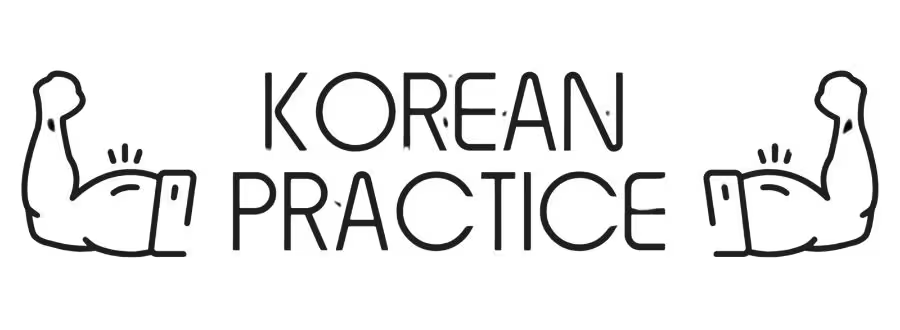How to Say Yes and No in Korean? You can say Yes = 네 (ne) and No = 아니요 (a-ni-yo).
But that’s just the beginning—there are other ways Koreans say yes and no depending on the situation. Keep scrolling to explore 8 easy examples with full explanations.
Follow These Steps
Step 1: Listen & Shadow
Follow the audio and speak along with the highlighted text.
Step 2: Check & Learn
Use the breakdowns to understand grammar, vocab, and meaning.
Step 3: Review Visually
Watch the reading practice video to reinforce the story.
Go Deeper
Get the full story and extra practice in the paid course.
STEP 1
Click the play button to try shadowing below.
Tip: For the best, distraction-free experience, switch to fullscreen mode while shadowing.
Table of Contents

STEP 2
How to Say Yes in Korean
네 (ne)
- 네 (ne) is the most common way to say yes in Korean. It’s a polite and formal way of agreeing with someone, similar to the English word “yes.”
- Example: A: “Do you want to go to the movies tonight?” B: “네, 좋아요. (Yes, I’d like that.)”
Example Sentences:
Original Korean Sentence
네, 좋아요.
Pronunciation Guide
네 (ne), 조아요 (jo-a-yo).
Meaning and Context
네 (yes; in a polite and formal way), 좋 (to like) 아요 (I’m telling you polite and friendly).
English Translation
Yes, I’d like that.
Literal Translation
Yes, (I) like.
✍️ Related: Eyes in Korean – Must-Know Vocabulary from a Creepy Night Story
예 (ye)
- 예 (ye) is another formal way to say “yes” in Korean. It’s commonly used in business and academic settings.
- Example: A: “Will you be attending the meeting tomorrow?” B: “예, 참석할게요. (Yes, I’ll be attending.)”
Example Sentences:
Original Korean Sentence
예, 참석할게요.
Pronunciation Guide
예 (ye), 참석칼께요 (cham-seok-kal-gge-yo).
Meaning and Context
예 (yes; in a formal way), 참석하 (to attend) ㄹ게 (I will) 요 (I’m telling you polite and friendly).
English Translation
Yes, I’ll be attending.
Literal Translation
Yes, I’ll attend.
✍️ Related: Jewelry in Korean: 5 Beautiful Words You’ll Love to Learn
응 (eung)
- 응 (eung) is a casual way of saying “yes” in Korean. It’s often used among friends and family members.
- Example: A: “Do you want to grab some lunch?” B: “응, 좋아. (Yes, that sounds good.)”
Example Sentences:
Original Korean Sentence
응, 좋아.
Pronunciation Guide
응 (eung), 조아 (jo-a).
Meaning and Context
응 (yes; in a casual way), 좋 (to be good) 아 (I’m telling you casually).
English Translation
Yes, that sounds good.
Literal Translation
Yes, good.
✍️ Related: Teacher in Korean: The 5 Correct Ways to Address Teachers (Avoid These Common Mistakes!)
그래 (geurae)
- 그래 (geurae) is another casual way of saying “yes” in Korean. It can be used in response to a question or statement.
- Example: A: “Are you coming to the party tonight?” B: “그래, 갈게. (Yes, I’ll go.)”
Example Sentences:
Original Korean Sentence
그래, 갈게.
Pronunciation Guide
그래 (geu-rae), 갈게 (gal-gge).
Meaning and Context
그래 (yes; in a way I agree or I understand), 가 (to go) ㄹ게 (I will; in a casual speech).
English Translation
Yes, I’ll go.
✍️ Related: Konglish: The Fun Mix of Korean and English
How to Say No in Korean
아니오 (anio)
- 아니오 (anio) is the most formal way of saying “no” in Korean. It’s appropriate for business and academic settings.
- Example: A: “Can you work overtime tonight?” B: “아니오, 불가능합니다. (No, it’s not possible.)”
Example Sentences:
Original Korean Sentence
아니오, 불가능합니다.
Pronunciation Guide
아니오 (a-ni-o), 불가능함니다 (bul-ga-neung-ham-ni-da).
Meaning and Context
아니오 (no; in a formal way), 불가능하 (to not be possible) ㅂ니다 (is; I’m telling you polite and formal way).
English Translation
No, it’s not possible.
Literal Translation
No, (it)’s not possible.
✍️ Related: Blind Date in Korean: Learn the Word Sogaeting and Korean Dating Culture
아니요 (aniyo)
- 아니요 (aniyo) is a polite and friendly way of saying “no” in Korean. It’s appropriate in most situations.
- Example: A: “Do you want to join us for dinner?” B: “아니요, 저는 오늘 밤에 다른 약속이 있어요. (No, I have another appointment tonight.)”
Example Sentences:
Original Korean Sentence
아니요, 저는 오늘 밤에 다른 약속이 있어요.
Pronunciation Guide
아니요 (a-ni-yo), 저는 (jeo-neun) 오늘 (o-neul) 밤에 (ba-me) 다른 (da-reun) 약소기 (yak-so-gi) 잇써요 (it–sseo-yo).
Meaning and Context
아니요 (no; polite and friendly way), 저 (I; in a humble way) 는 (I’m going to talk about me) 오늘 (today) 밤 (night) 에 (at) 다른 (another) 약속 (appointment) 이 (my subject is appointment) 있 (to have) 어요 (I’m telling you polite and friendly).
English Translation
No, I have another appointment tonight.
Literal Translation
No, I have another appointment at today night.
✍️ Related: Taste in Korean: Complete Guide to 5 Flavors
아닙니다 (animnida)
- 아닙니다 (animnida) is a more formal way of saying “no” in Korean. It’s often used in official or business contexts.
- Example: A: “Have you received any updates on the project?” B: “아닙니다, 아직 최신 정보를 받지 않았습니다. (No, I haven’t received the latest updates yet.)”
Example Sentences:
Original Korean Sentence
아닙니다, 아직 최신 정보를 받지 않았습니다.
Pronunciation Guide
아님니다 (a-nim-ni-da), 아직 (a-jik) 최신 (choe-sin) 정보를 (jeong-bo-reul) 받찌 (bat-jji) 아낫씀니다 (a-nat-sseum-ni-da).
Meaning and Context
아닙니다 (no; in a official way), 아직 (yet) 최신 (latest) 정보 (information) 를 (my object is latest updates) 받 (to receive) 지 않 (not) 았 (past tense) 습니다 (I’m telling you formally).
English Translation
No, I haven’t received the latest updates yet.
Literal Translation
No, (I) haven’t received latest information yet.
✍️ Related: You in Korean Language: 7 Ways with Examples Explained
아니 (ani)
- 아니 (ani) is a casual way of saying “no” in Korean. It’s often used among friends and family members.
- Example: A: “Do you want to watch a movie?” B: “아니, 지금은 좀 바빠. (No, I’m a bit busy right now.)”
Example Sentences:
Original Korean Sentence
아니, 지금은 좀 바빠.
Pronunciation Guide
아니 (a-ni), 지그믄 (ji-geu-meun) 좀 (jom) 바빠 (ba-bba).
Meaning and Context
아니 (no; in a casual way), 지금 (now) 은 (as for) 좀 (a bit) 바쁘 (to be busy) 아 (am; I’m telling you casually).
English Translation
No, I’m a bit busy right now.
Literal Translation
No, As for now, (I)’m a bit busy.
✍️ Related: Drink in Korean? Don’t Just Say 마시다 — Use It Like a Native!
STEP 3
Watch this short story video to see Yes and No in action
Tips for How to say Yes and No in Korean
- Now that you know how to say yes and no in Korean, here are some tips for perfecting your pronunciation and using these phrases correctly:
Pay attention to tone
- In Korean, the tone of your voice can change the meaning of a word or phrase. How to say yes and no in Korean to be sure to use the appropriate tone to convey your message correctly.
Use body language
- Body language can also be helpful in communicating how to say yes and no in Korean. For example, nodding your head while saying “ne” can emphasize your agreement, while shaking your head while saying “aniyo” can indicate disagreement.
Practice with native speakers
- One of the best ways to improve your pronunciation and confidence in using how to say yes and no in Korean is to practice with native speakers. Look for language exchange programs, language learning apps, or online forums to connect with Korean speakers and practice your skills.
From My Original Story Style Breakdown™ — A New Way to Truly Understand Korean
This is just one sentence from a complete learning system you won’t find anywhere else — designed to help you understand Korean naturally, without getting lost in grammar rules. You can choose between Quick Learning for a fast overview, or Deep Learning for a step-by-step breakdown.
When you can truly understand Korean sentences this way, speaking becomes much easier.
🚀 Quick Learning

Original Korean Sentence
사자가 코끼리를 잡아요.
Pronunciation Guide
사자가 (sa-ja-ga) 코끼리를 (ko-ggi-ri-reul) 자바요 (ja-ba-yo).
English Translation
The lion catches the elephant.
Literal Translation
Lion catch elephant.
Quick Reference
사자가 (lion) 코끼리를 (elephant) 잡아요 (catch).
💡 Need more details? See “Deep Learning” below!
🔍 Deep Learning
Meaning and Context
사자 (lion)
→ The lion — the one taking action now in the story.
가 (subject marker)
→ Points out that the lion is doing the action.
코끼리 (elephant)
→ The one the action is done to.
를 (object marker)
→ Shows that the elephant is the object being caught.
잡 (to catch, grab, take)
→ The action — the lion catches or grabs the elephant.
아요 (polite ending)
→ I’m telling you this in a polite and friendly way.
Real-Life Usage
잡아요 is common when talking about catching or holding something.
Pattern Practice
1. 사자가 토끼를 잡아요.
2. 고양이가 쥐를 잡아요.
3. 아이가 공을 잡아요.
4. 강아지가 공을 잡았어요.
FAQs (What You Might Still Wonder About)
Can I just nod or shake my head instead of saying “yes” or “no” in Korean?
Yes, body language is often used in casual conversations, especially among close friends. However, if you’re learning how to say yes and no in Korean, it’s best to say the words out loud — like “응” or “아니” — to reinforce your pronunciation and fluency.
What’s the difference between “응” and “그래” when saying yes in Korean?
Both are informal ways of agreeing, but they carry different nuances. “응” simply means “yes,” while “그래” can mean “okay,” “sure,” or “that’s right,” depending on context. If you’re wondering how to say yes in Korean informal situations, both are great — just choose based on the tone of the conversation.
Is “아니요” always softer than “아니오”?
Yes. While both are polite ways of saying “no”, “아니요” is more commonly used and feels friendlier. “아니오” sounds a bit stiffer and more formal, often heard in official interviews or scripted contexts. If you’re learning how to say no in Korean, start with “아니요” for most daily conversations.
Can I use “아니” with older people if I’m close to them?
Even if you’re close, it’s better to stick with polite speech unless they’ve explicitly told you it’s okay to speak casually. “아니” is no in Korean informal style, and it can sound too blunt if used carelessly. Context is everything.
What’s the most natural response when someone offers food and I want to say yes?
You can say “응, 좋아” (Yes, I’d like that) or “그래, 고마워” (Okay, thanks) when speaking informally. These expressions combine both acceptance and gratitude — a natural way to use yes in Korean informal situations.
Do Koreans use “yes” and “no” more than repeating the verb like in English?
Actually, no! In Korean, it’s common to repeat or echo the verb rather than just say “yes” or “no.” For example, instead of just “네,” someone might say “갈게요” (I’ll go) as a full response. Still, knowing how to say yes and no in Korean helps you follow along and respond naturally.
How do I practice saying yes and no in Korean without sounding like a robot?
Try shadowing real dialogues from dramas or practice informal and formal versions like “네 / 예 / 응 / 그래” and “아니요 / 아닙니다 / 아니” with varying tones. Understanding yes in Korean informal and no in Korean informal makes your Korean sound more natural and less textbook-like.
Final words
Knowing how to say yes and no in Korean is essential for basic communication in the language. Whether you’re traveling to Korea, studying Korean, or communicating with Korean-speaking friends or colleagues, mastering these phrases can help you navigate daily interactions with ease.
Remember to pay attention to tone and body language, and don’t be afraid to practice with native speakers to improve your skills. With time and practice, you’ll become more comfortable and confident in using “ne,” “ye,” “aniyo,” and “animnida” in everyday conversation.
So, there you have it – a beginner’s guide to how to say yes and no in Korean. Now you can confidently respond to questions and express your opinions in Korean. How to Say Yes and No in Korean is just the beginning – keep learning and exploring the language to deepen your understanding and appreciation of Korean culture.









